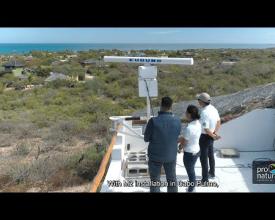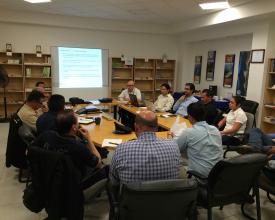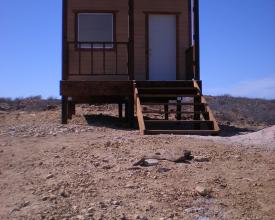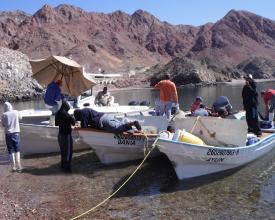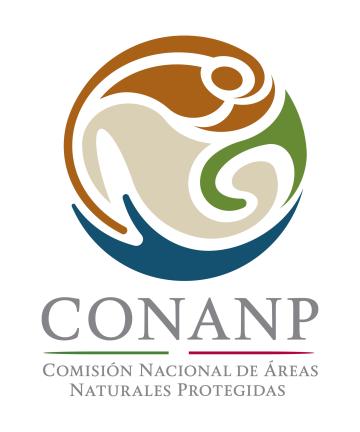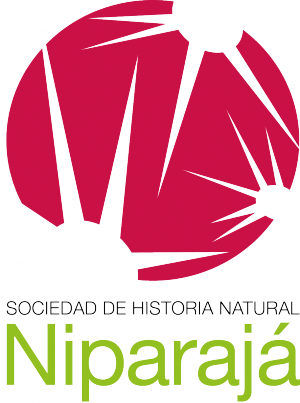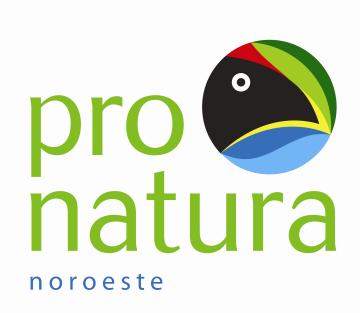
A holistic strategy for Protected Area management
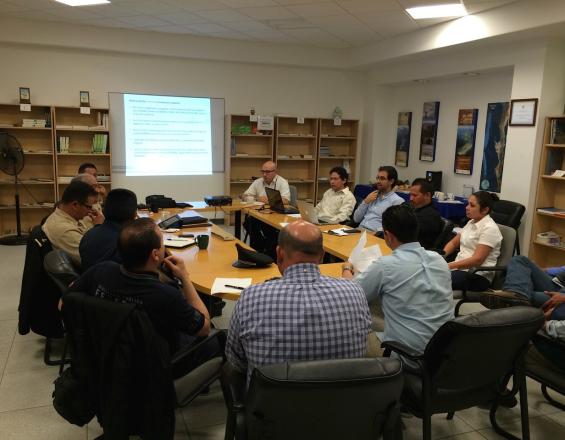
Protected Areas (PAs) are a powerful tool for biodiversity conservation. In Mexico, more than 175 federal PAs protect over 25.6 million hectares of habitats and landscapes. Due to the remote location of many PAs, however, administrative frameworks for their governance and enforcment of regulations is often lacking. Therefore, a conceptual model to support PA enforcement was developed. This model is designed to increase the compliance of regulations and to facilitate the recovery and conservation of fish stocks and biodiversity.
Context
Challenges addressed
Illegal resource use, overfishing and lack of enforcement:
- Illegal extraction of natural resources
- Fisheries overexploitation
- Ignorance and non-compliance to regulations
- Lacking inter-institutional coordination and political will
- Scattered surveillance and enforcement system
- Excessive workload of public servants
- Lacking human and economic resources as well as presence of authorities
- Absence of impact indicators´for evaluation
- Gaps in the legal system
Location
Process
Summary of the process
NA
Building Blocks
Evaluation of protected area effectiveness
Key social and environmental factors affecting Protected Areas are identified through interviews, surveys and through research of public databases to evaluate both, the perceptions of users, and the effectiveness of authorities in the management of protected areas.
Enabling factors
- Trusting relations between authorities and resource users
- Sharing of detailed information between all actors
- Knowledge of the area
- Well-defined indicators
- Availability of information through an open access system (INFOMEX)
Lesson learned
- In some cases authorities preferred to receive the survey via mail so they could answer to it in a written form.
- Although the interview questions can be shared with the interviewee prior to the interview, it is important that the interview is performed by an interviewer to make sure that all questions are answered.
- Some of the governmental agencies, especially the military ones, are not able to provide detailed information on their involvement in surveillance and enforcement. However, given it is important to know how they participated, it is suggested to generate general information on their involvement through interviews with other authorities.
Inter-institutional working groups
An inter-institutional surveillance and enforcement committee is set up for each Protected Area and creates a work programme, again, highlighting how different agencies collaborate around which topics. The work programme includes topics such as surveillance, phrasing of objectives and goals, setting a legal framework, listing individual competencies of the agencies, develop action plans, set institutional commitments and an evaluation matrix.
Enabling factors
The success of the commitees is based on mutual confidence and trust, political will, instituional backing, experience in the topic, continuity and follow-up, creation of shared values and clearly defined roles.
Lesson learned
- The role of civil society organizations (CSOs) is a topic for discussion in the working groups of some Protected Areas, so it is very important to clearly define their role from the beginning. CSOs can e.g. support as technical advisers, contribute information, support with logistics, follow-up on agreements and facilitate communication between the participants of the different institutions.
- Common indicators that all members of a working group refer to, encourage the will to work together.
- Regular meetings and using virtual communication proofed useful.
- Sometimes it is better to have voluntary commitments of participation instead of having agreements that require legal review by every organization involved.
Capacity building on MPA regulations
Capacity building measures include training for federal inspectors, fisheries officers, naval forces and park rangers. This includes training on and dissemination of Protected Area regulations for both users of and staff monitoring the Protected Areas.
Enabling factors
- Clear and precise information
- Regular trainings
- Evaluation and follow-up
- Creating trust
Lesson learned
- The authorities responsible for surveillance and enforcement are interested in detailed information about the protected areas, so the trainings are always well attended. #
- Evaluation on the knowledge before and after the training workshops allows the identification of knowledge gaps and documentation of progress. It is important to have regular evaluations in order to ensure participants understand and remember key information.
- It is helpful to use personal accounts and explanations in addition to technical documents.
- Integrating an exercise or using video material ensures active particpation.
- Coastal fishermen are not very familiar with the use of maps, so other means to convey information about management plans must be developed.
Long-term financing for MPA management
Mexican Protected Areas are usually financed through public funds. Adding private or developing a system with mixed funds can be particularly relevant when managing resources for projects of short and medium term. Opportunities for other sources to finance the management of the Protected Areas include funds that are financed by environmental fines and access fees to Protected Areas.
Enabling factors
NA
Lesson learned
- Short- or medium-term private resources have been fundamental to construct, systemize and prove that the approach is practicable.
- A long-term success depends on governmental investment or on the existence of specific funding through heritage assets. Both are also useful for the supply of equipment and necessary infrastructure.
Resources
Joint surveillance and enforcement of MPAs
Protected Areas authorities conduct surveillance patrols and strategic operations. Actions may be implemented by a single agency or a combined task force and can be divided into three types: surveillance, enforcement and intelligence.
Enabling factors
- Appropriate human and financial resources
- Field experience
- Inter-institutional coordination
- Mutual trust
- Technical capacities to collect and analyze information
Lesson learned
- Surveillance and enforcement in protected areas are the responsibility of the governmental agency. Still we have discovered that interinstitutional cooperation favours higher presence and enforcement in the area. Joining forces with the Marine Secretariat increased operation capacities to operate as well as the safety of involved personell.
- Nonetheless, leadership by a responsible stakeholder is required (in our case CONANP).
- The establishment of a platform systemizing field data collated, allows to generate valuable information, which supports the evaluation and adaption of the work programs.
Impacts
- Increase in the number of acts set by the PROFEPA (Federal Administration of Environmental Protection) in the protected areas of Bahía de Los Ángeles (233% between 2012 and 2013) and of the Biosphere reserve El Vizcaíno (evaluation in progress).
- The dissemination of information to promote the compliance of users increased as measured by the proportion of users that know the regulations, the consequences of non-compliance and the advantages of complying to them: 85% Guaymas industrials, 90% ribereños of Bahía de los Ángeles, 60% ribereños of El Barril.
The governance indicators of the IUCN manual (2006): How is your MPA doing? (http://marineprotectedareas.noaa.gov/pdf/national-system/mpadoing.pdf) were used for the evaluation.
Beneficiaries
Direct benficiaries:
- Fishermen
- Tourists
Indirect benficiaries:
- Government authorities
- Seafood companies
- Seafood consumers
- Tourism industry
Sustainable Development Goals
Story
It was the time of the year when the whales are giving birth to their calves and play with them in the lagoon.
One morning, Juan (from PROFEPA) and Gringo, a colleague from the Mexican Comission for Protected Areas (CONANP) got into their boots and life jackets, and hopped onto their small boat. They left with the purpose to monitor those whales. Suddenly, Gringo saw something strange in the water. "There is something far away, I see a flutter, is it a fish caught in a net?", he asked Juan. Surprise and irritatated, Juan and Gringo found that it was a small turtle trying to escape a fishing net. The small turtle was completely entangled in the net and could not get out off it withput help. Juan and Gringo tried to hold the turtle gently while cutting the net, but the turtle moved with great force and despair. When they finally managed to cut the nets and free the turtle, they took it to shore and had a veterinarian examine the turtle. After it received a clean bill of health, the turtle was released into the lagoon. Like a Hollywood star, this departure included cameras, applause and the smiles of visitors, who came to see the turtle off.
Adapted from “The History of Conservation“ by Claudia Cecilia González Olimón, 2013

